NETWORKING TUTORIAL
What is computer network
Network nodes are computing devices that require connections to form a network.
Network Devices:
Network devices, also known as nodes, are computing devices that require connectivity to form a network.
Routers:
Routing is the process of selecting the network path for data packets to traverse. Routers are the devices that forward these packets between networks to reach their intended destination. They play a crucial role in enhancing the efficiency of large networks.
e.g.-Archer AX 12 (tp-link), DIR-X1560 (D-LINK)
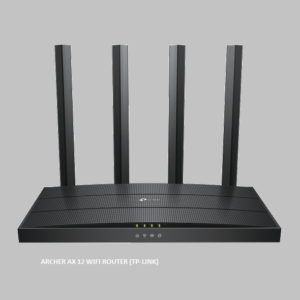
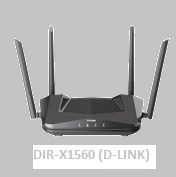
Servers:
Computing devices that handle data storage and run applications are examples of network devices. e.g. IBM POWER S1024, E1050
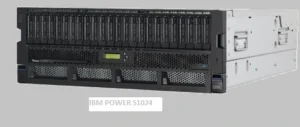
Switches:
Switches form the basis of most business networks. They act as a controller, linking computers, printers, and servers to a network within a building or a campus. Essentially, switches enable devices on a network to communicate with one another, as well as with other networks, creating a shared pool of resources. By facilitating the sharing of information and allocation of resources, switches help businesses save money and increase their productivity.
e.g. NETGEAR M4350 8X8F SWITCH
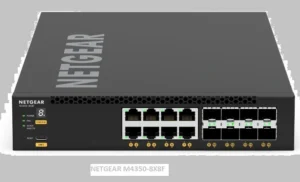
There are two basic types of switches : on premises and cloud managed.
If you want to have more control over your LAN, then a managed on-premises switch is the way to go. With this, you can easily configure and monitor your network traffic. On the other hand, if you want a simpler way to manage your network, then a cloud-managed switch is your best bet. It comes with a user-friendly interface, multisite full-stack management, and automatic updates that are directly delivered to the switch.
Ethernet:
The concept of Ethernet was formulated and introduced by XEROX PARC, which is now known as PARC (Palo Alto Research Center). The agency proposed to develop a system that would allow computers and devices to be connected to each other using coaxial cables. Ethernet was initially developed by engineers Bob Metcalfe and D.R. Boggs in 1972. In 1976, they successfully connected two computers and transferred data at a speed of 3MB/second. Industry standards based on their work were established under IEEE 802.3 set of specifications in 1980.Ethernet has been the primary wired network technology for local-area networks (LANs) in office environments for quite some time now. Alongside wired Ethernet, wireless Wi-Fi technology also exists. LANs are connected to the Internet/WANs through a firewall. The interconnection of servers, fixed user devices, and wireless devices is achieved through a hierarchical arrangement of routers and switches.
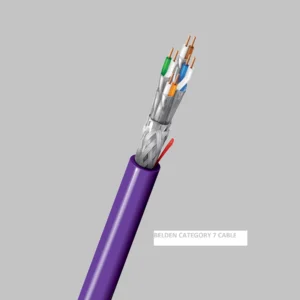
Ethernet technology has undergone recent extensions which have broadened its use in homes. Two of these extensions are Powerline Carrier (PLC) and Power over Ethernet (PoE). Powerline modems use existing power lines as a communication channel to transmit Ethernet packets on top of the power signal. In contrast, PoE distributes power over the Ethernet data cable. This technology uses the existing Ethernet cables to distribute power to devices on the network.
The Internet of Things (IoT)
The Internet of Things (IoT) refers to the connection of smart devices, ranging from household appliances to tiny sensors. With the advent of cloud systems, the internet now connects billions of personal and industrial devices. The IoT is primarily driven by embedded devices, such as high-resolution video security cameras, Video over IP (VoIP) phones, and others, which require high-bandwidth streaming capabilities.
- Sensors and actuators:
Devices known as sensors are designed to observe their surrounding environment and provide quantitative measurements of various variables like temperature, humidity, presence, or absence of some observable, among others. On the other hand, actuators are designed to operate on the environment, such as changing thermostat settings or operating a valve.
- Connectivity:
These devices can be connected via either wireless or wired links into a network to send collected data to the appropriate data center (for sensors) or receive operational commands from a controller site (for actuators).
- Capacity:
To support the devices, the network should be capable of handling a vast amount of data flow.
- Storage:
It’s essential to have a large storage facility to store and maintain backups of all the collected data. Typically, cloud capability is utilized for this purpose.
- Data analytics:
In the case of large device collections, “big data” is generated, which requires data analytics capability to process the data flow.
ICT
ICT stands for Information and Communication Technologies, which is a collection of technologies created to manage information and transmit it from one place to another. It includes tools, supports, and channels to access and process information. Some examples of these technologies are digital whiteboards, blogs.
INTERNET
The internet connects computers and servers globally, transforming the way we live, work and communicate. It enables instant connection and personal expression through social media, yet also poses risks like cyberbullying, online privacy issues and misinformation. Despite challenges, the internet remains an integral part of our lives and shapes the way we interact with the world.
COMPONENTS OF INTERNET
The internet is a big network made up of computers, servers, and people that help us share information all over the world. It has five main parts:
1. Servers: These are special computers that keep websites and other online information.
2. Modems and routers: These devices help us connect to the internet by sending signals between our devices and the servers.
3. Data centers: These are big buildings that hold the servers and other equipment that make the internet work.
4. Cables and wires: These are the physical connections that help move information between servers and people.
5. Internet service providers (ISP): These companies give people access to the internet through a paid subscription.
All together, these parts work well and help us share information and services easily all around the world.
Email is a digital communication tool used to send written messages, documents, and files between individuals or groups. It has evolved into a primary form of communication in professional and personal settings. Emails can be composed and sent through various email providers using an address that uniquely identifies the sender. An email message typically includes a subject line indicating the topic of the message, a salutation, body text, and a closing. Attachments can be included to transfer files or documents with the message. Email is useful for sending and receiving important information quickly and conveniently without the need for physical mail. It is also searchable, allowing for easy reference and retrieval of past correspondence. Though a powerful tool, proper email etiquette should be maintained to convey professionalism and effective communication.
When structuring an email, it is important to keep in mind the purpose and audience of the message. The following elements should be included:
1. Subject line: Clearly state the purpose of the email in a concise manner.
2. Salutation: Begin your email with a polite greeting like “Dear Mr./Ms. [Last Name],” or “Hello [First Name],”.
3. Body: The body of the email should be organised into paragraphs, each containing a clear message or idea. Use proper grammar and punctuation.
4. Closing: End your email with a polite and professional closing such as “Best regards,” “Sincerely,” or “Thank you.”
5. Signature: Include your relevant contact information like your full name, job title, and any social media or website links.
WHAT IS RFID
RFID tech transfers data wirelessly between a reader and tag attached to an object. It tracks inventory, assets, and people in retail, healthcare, and transportation. RFID offers accuracy and efficiency, reduces costs, enhances customer experiences, and provides security features. It’s a powerful tool for business optimization and gaining competitive advantages.
There are three types of RFID technology: Low Frequency (LF), High Frequency (HF), and Ultra-High Frequency (UHF). LF is used for access control, animal tracking, and vehicle identification. HF is used for payment systems, library book tracking, and medical equipment tracking. UHF is used for inventory management, supply chain management, and asset tracking.
Example:
HID® Bluetooth® Low Energy BEEKs™ Duress Beacons (Brand – HID)
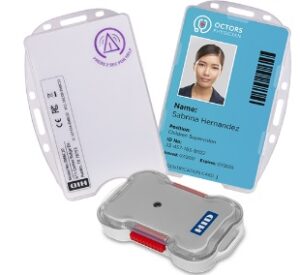
RF Specifications:
Standard:Bluetooth® Low-Energy (LE) 5.0
Frequency Band :2400-2483.5 MHz
Max Output power: -1.4 dBm eirp, (+2.0 dBm eirp duress alert)
Number of channels:40
Modulation: GFSK
WHAT IS CLOUD COMPUTING
Cloud computing can be thought of as renting computing resources (like storage, servers, databases, software) over the internet, instead of having to buy, own, and maintain them yourself. It’s like having a giant pool of resources you can tap into whenever you need them, instead of having your own personal pond.
Core principles of cloud computing are:
On-Demand Access
On-demand access is one of the core principles of cloud computing. It means that you can access computing resources, such as servers, storage, and databases, exactly when you need them, without having to buy, own, and maintain your own infrastructure. This is a major advantage over traditional IT, where you typically have to purchase hardware and software upfront, even if you don’t use it all the time.
Pay-as-you-go
Essentially, it means that you only pay for the resources you use, as opposed to the traditional model where you purchase and maintain your own infrastructure, regardless of how much you actually utilize it. This can be likened to paying for electricity based on your consumption rather than having a flat monthly fee.
Here are some real-world examples of pay-as-you-go in action:
An e-commerce website: During peak shopping seasons, the website can temporarily scale up its server resources to handle the surge in traffic, and then scale down afterwards, paying only for the additional resources used during the peak period.
A startup: Instead of investing in expensive infrastructure at the outset, a startup can leverage pay-as-you-go cloud resources to launch and grow their business, only paying for the resources they need as they scale.
A freelancer: A freelance developer can use pay-as-you-go cloud resources for specific project requirements, without having to maintain their own infrastructure when they’re not actively working on projects.
Managed service
Managed service cloud computing, often called managed cloud for short, takes the benefits of cloud computing (on-demand access, pay-as-you-go pricing) a step further by outsourcing the management and maintenance of your cloud infrastructure to a third-party provider. This means you can focus on your core business activities while the provider handles all the complexities of your cloud environment.
Accessibility
Accessibility in cloud computing refers to how well cloud services and tools can be utilized by people with disabilities. This encompasses various aspects, ensuring everyone has equal opportunity to use cloud-based technology regardless of their limitations.
Accessibility Features in Cloud Computing:
Web accessibility: Cloud interfaces and applications should adhere to web accessibility guidelines like WCAG to be usable by assistive technologies (screen readers, text-to-speech software).
Platform accessibility: Cloud platforms themselves should be accessible, allowing developers to build accessible applications on top of them.
API accessibility: Cloud APIs should be designed and documented in a way that is accessible to developers with disabilities.
Security accessibility: Security tools and features should be accessible to users with disabilities, ensuring everyone can benefit from strong security practices.
TYPES OF CLOUD COMPUTING
Public Cloud:
Resources are shared across a large pool of users and accessed through the internet. Popular examples include Amazon Web Services (AWS), Microsoft Azure, and Google Cloud Platform (GCP). Ideal for startups, small businesses, and workloads with variable demand.
Private Cloud:
Resources are dedicated to a single organization and hosted on-premises or by a third-party provider. It offers high security and control, suitable for sensitive data or compliance-driven needs.
Hybrid Cloud:
Hybrid Cloud: Combines public and private clouds, allowing organizations to balance flexibility and control. Useful for managing peak loads, running non-critical applications publicly, and keeping sensitive data private.
Benefits of Hybrid Cloud:
Flexibility
Security and compliance
Cost optimization
Disaster recovery
WHAT IS IP ADDRESS?
An IP address is a unique identification number assigned to every device connected to the internet. It’s like an address that other devices use to find and communicate with your device. Just like your physical address lets people know where your house is, your IP address lets other devices know where on the internet you are.
Think of the internet as a giant network of highways and roads. Each house (device) has its own unique address, the IP address, allowing information to be delivered to the right destination.
Structure of an IP Address:
An IP address typically consists of four sets of numbers separated by dots, like this: 192.168.1.1
Each number can range from 0 to 255.
There are two main versions of IP addresses: IPv4 (with 4 sets of numbers) and IPv6 (with 8 sets of numbers). IPv4 addresses are becoming more limited, while IPv6 offers a much larger pool of unique addresses.
Types of IP Addresses:
- Public IP address: Assigned by your internet service provider (ISP) to your entire network. This is the address visible to the outside world.
- Private IP address: Assigned within your private network to individual devices like computers, phones, etc. These addresses are not directly accessible from the internet.
IPv4 Working Principle:
IPv4, short for Internet Protocol version 4, is the foundational addressing system of the internet. It works behind the scenes to route data packets efficiently and ensure communication between devices across the vast network. Here’s a breakdown of its key principles:
Addressing:
- Each device connected to the internet has a unique 32-bit IP address, typically written in dotted decimal notation (e.g., 192.168.1.1).
- Each address is divided into four octets (8-bit segments), ranging from 0 to 255.
- The combination of these four octets creates a unique identifier for each device.
Routing:
- When you send data (e.g., a website request), it’s broken down into packets with the destination IP address embedded in the header.
- Routers act like traffic directors, reading the destination IP address in each packet and forwarding it to the next router closer to the target device.
- This process continues until the packet reaches the final destination, where it’s reassembled and delivered.
Subnetting:
- As the internet grew, the limited pool of IPv4 addresses became a concern. Subnetting allows dividing a single network into smaller subnetworks, expanding the reach while managing address usage efficiently.
- Subnetting uses a subnet mask, which defines the network portion and host portion of the IP address. Devices within the same subnet can communicate directly, while others rely on routers.
Addressing Modes:
- Unicast: Sending data to a single destination device (most common).
- Broadcast: Sending data to all devices within a specific network segment.
- Multicast: Sending data to a group of devices that have subscribed to a specific multicast address.
Limitations:
- IPv4 offers a limited pool of addresses (around 4.3 billion) due to its 32-bit structure.
- Depletion of unique addresses is a concern, pushing for adoption of the newer IPv6 standard with a much larger address space.
Benefits:
- Simple and widely adopted technology.
- Efficient routing and data transmission.
- Offers basic functionalities for device identification and communication.
